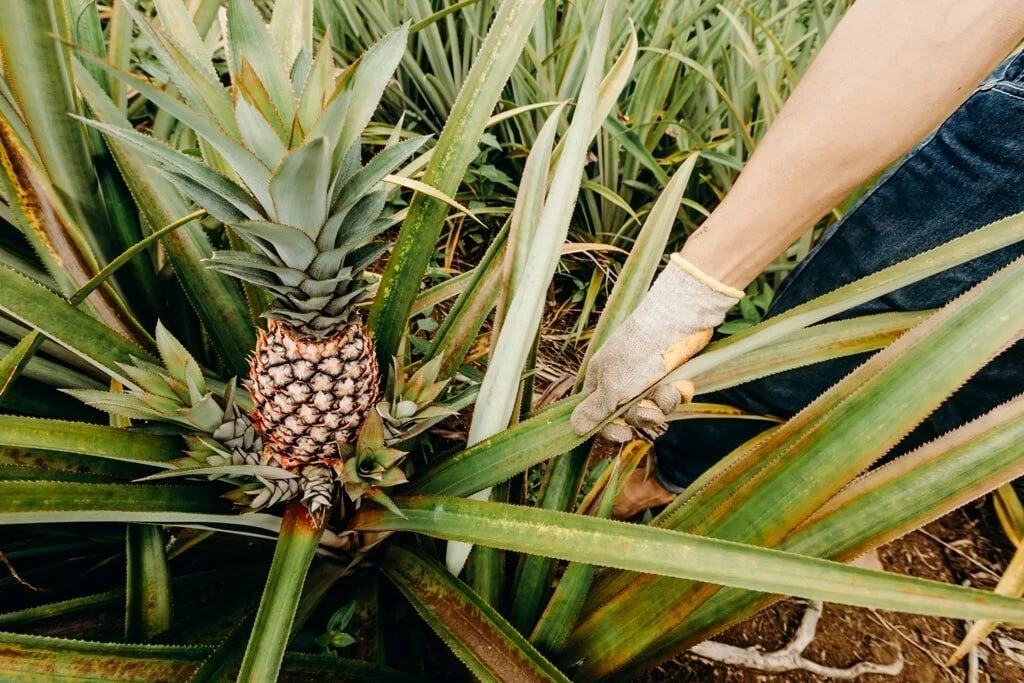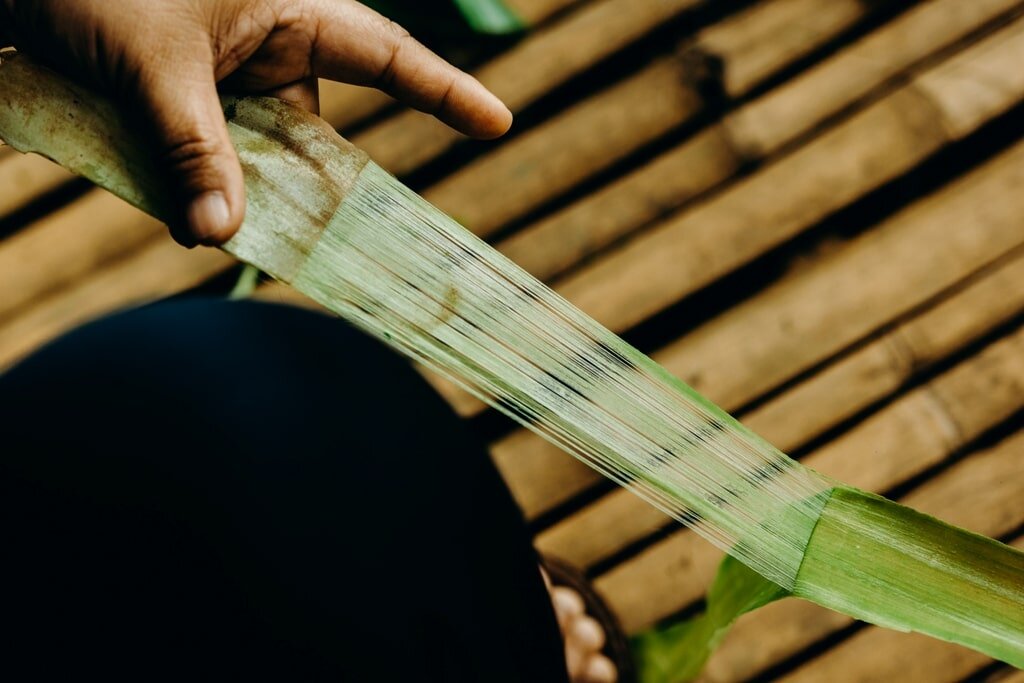Piña (Pineapple) Cloth, Philippines
The development of ‘vegan’ leather made from pineapple (piña) leaves is considered one of the greatest eco-friendly material innovations in recent years. Pioneered by Piñatex, a company led by Dr Carmen Hijosa, and researchers at the Royal College of Art in London, the material has been used in footwear prototypes by brands including Puma and Camper.
The underlying process, piña weaving, has a much longer history in the Philippines, particularly in Aklan in the Western Visayas where native pineapple plants have been cultivated for their fibre for generations. Traditionally worn by the country’s elite and only made by a small number of women, piña cloth has experienced a resurgence in recent years, partly thanks to its new applications in the commercial fashion industry.
The process of piña weaving is completed in five stages. During the first step, pagkigue, mature pineapple leaves are harvested and stripped of their outer coating by scraping them with a blunt instrument (for example a coconut shell). Two grades of fibre are extracted from the leaves: the first, called bastos, is strong and course and usually reserved for making string or twine. Liniwan, or washout, only lifts away from the leaf after vigorous scraping. It is much finer and used for weaving fabric. The green epidermal layer is washed away from the fibres, leaving behind white, opaque threads.
The pagpisi and pagpanug ot stages involve hand-knotting and trimming individual fibres to create one long, seamless filament. The filament is warped and spun onto spools during pagtalinuas; when it’s not being manipulated, the loose fibres are mixed with sand to prevent them from tangling. The final stage of piña weaving, called paghaboe, involves weaving the cloth on an upright two-treadle loom.
Finished piña fabric is translucent and stiff. It is often mixed with silk or polyester to make scarves or garments, including the Barong Tagalog, the national dress of the Philippines. Piña cloth can be finished with traditional Filipina hand embroidery, called calado.
Check out the beautiful piña weaving done by the Aklan community below.







